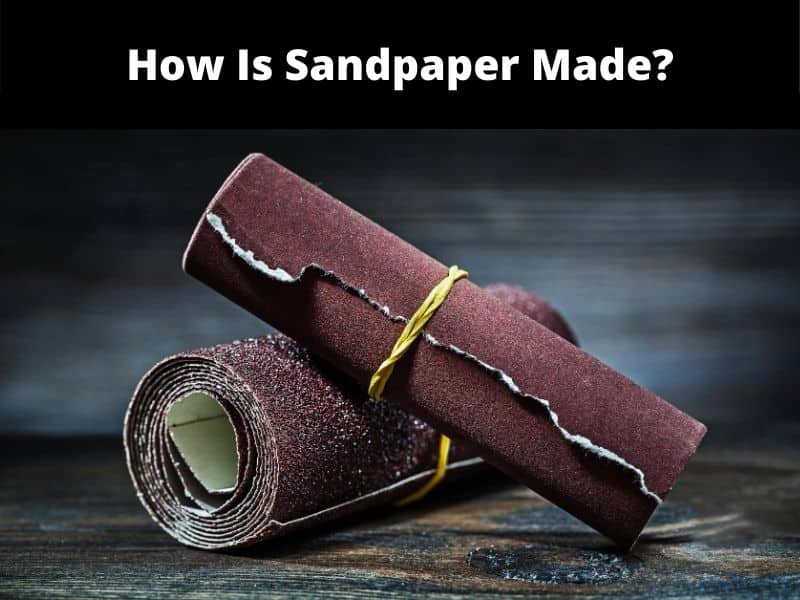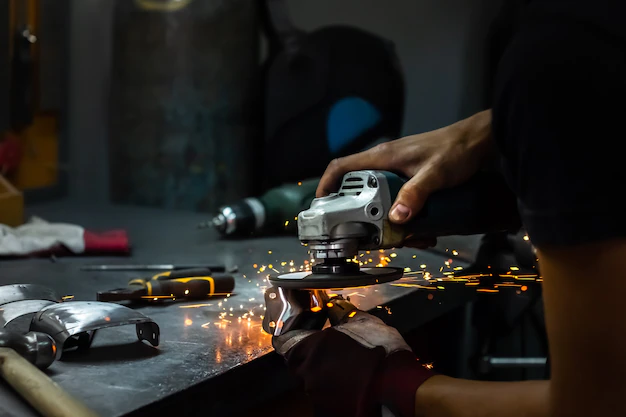You may have used sandpaper to put the finishing touches on your projects of woodworking. However, have you ever wondered how this adaptable tool ends up in your toolbox?
The crafting process of this hand tool for paint removal, polishing surfaces, sanding wood and so on is not as simple as it seems. Science, technology and nature come together to create the perfect tool to perfect our masterpieces. Let’s see how it is crafted.
The History of Sandpaper
The first recorded use of sandpaper was in China in the 13th century. Carpenters would use sand, crushed shells, and even seeds as abrasives.
Basic science was as simple then as it is now. Using a tiny sharp edge and friction, you can scrape away uneven layers of a given surface. We often need sandpaper to sand down wood, but it can be used on any surface, often including metal, stone or glass.
While the concept of sanding is the same, the way we make sandpaper today is very different from how it was done in ancient times. Instead of pressing any rough, gritty material onto a flexible surface, we assemble it. A unique factory run by a knowledgeable staff is the birthplace of this underrated piece of equipment.
The Crafting Process of Sandpaper
The process of making sandpaper involves using an adhesive to attach an abrasive material, such as silicon carbide, to a backing under pressure. Over time, the methods and components used in this process have changed, allowing us to build better and more efficient products.
Backing
Most sandpaper and coated abrasives today are not paper but are backed with cotton or other pliable synthetic material (so yes…sandpaper is neither sand nor paper). The backing is a large, uncut roll. The thickness of the backing selected depends on how rigid or flexible the finished product is desired. Basic information such as grain size is printed on the backing and dried before going to the next stage.
After drying, add the binder. Originally, naturally occurring gums were used to bond the abrasive to the backing. Today, factories dip one side of the backing into modern resins or epoxies, then heat to secure the abrasive to the paper. Prior to this, a computer is used to measure the density of the epoxy to ensure an even coating.
Applied Abrasives
Adhering abrasives to paper is where modern science steps in. This innovation plays a vital role in the manufacture of sandpaper today because it is how we create perfectly level abrasive surfaces. Instead of pouring grit onto paper, we now have the technology to apply grit using electricity.
This scene is more suitable for a sci-fi movie than a factory floor. Dancing particles are thrown at the paper and embedded in epoxy. Applying the abrasive in this manner will ensure an even application. Precise application is important, otherwise, you risk damaging your project with too much grit or an uneven coating.
That’s why you shouldn’t use homemade sandpaper unless you want an uneven abrasive that may do more harm than good. Homemade DIY sandpaper cannot reproduce the quality of professional sandpaper. Using the wrong or uneven grain size will almost certainly ruin your project. Using the wrong material can cause irreparable scars, even if it doesn’t look rough enough to damage your project.
Finishing Work
When complete, a piece of the sample is cut, then disassembled and weighed. Paper must meet strict specifications, so the process is meticulous. The technician will then look at the top layer of grit under a microscope to check that all grains are standing at the same height.
After the abrasive has completely covered one side of the paper, bake it. The resin or epoxy is set in the same way that a potter sets a glaze on his work. Apply high heat. This seals the abrasive to the backing rather than just sticking to it. Add the second layer on top of the grits and bake again. This action helps prevent the sandpaper from falling apart after the first use.
After the crew has completed a thorough inspection, it is rolled up again. Sandpaper is versatile and can be used for a variety of projects large and small. Most of these will be stamped into discs, cut into long strips for sanding belts, or cut into smaller strips for assembly onto louvered discs. These can be used for larger projects and commercial work, or cut into smaller sections for personal and home use. Some may even turn into cleats, which you might find on stairs or even skateboards.


